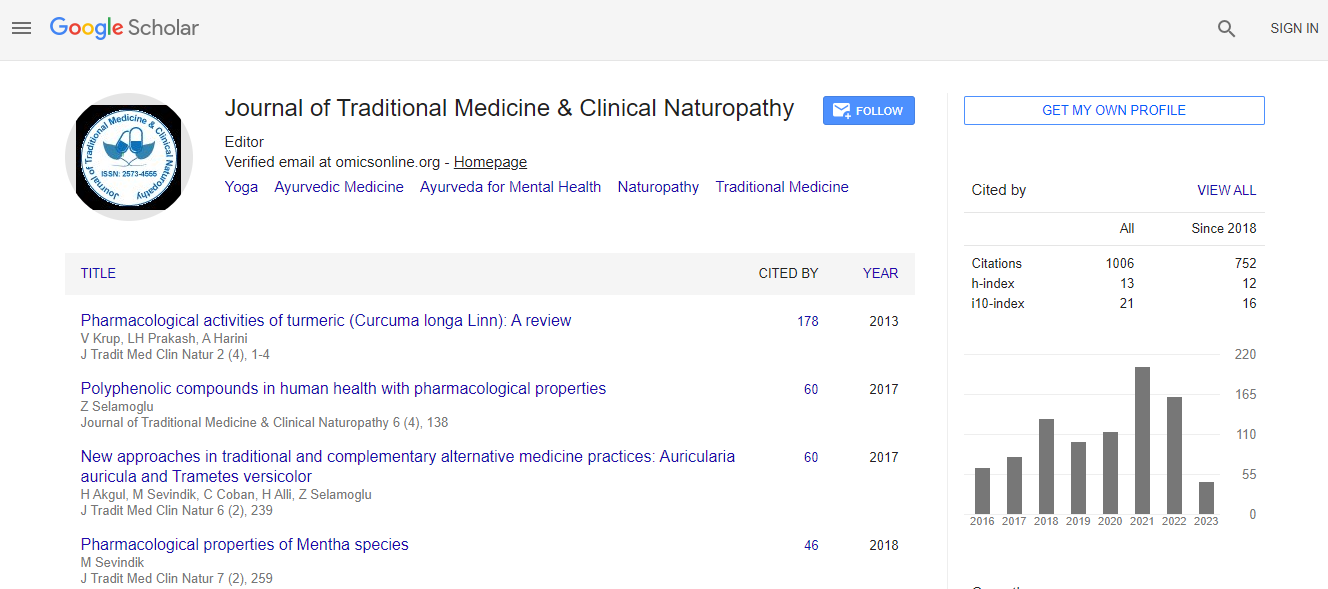Case Report
Effect of Indrayava (Holarrhena antidysenterica Seed) on Inpatient Uncomplicated Severe Hyperglycaemia: A Case Study
| Ashok Kumar Panda1*, Debajyoti Das1, Amit Kumar Dixit2 and Jayram Hazra3 | |
| 1Research Officers (Ayurveda), Department of Clinical Research, NRIADD, CCRAS, Kolkata, India | |
| 2Research Officer, Department of Biochemistry, NRIADD, CCRAS, Kolkata, India | |
| 3Director, National Research Institute of Ayurvedic Drug Development, CN-4, Sector-V, Bidhan Nagar, Kolkota-91, India | |
| Corresponding Author : | Ashok kumar Panda Research Officers (Ayurveda) Department of Clinical Research Tadong, Gangtok, Sikkim, India E-mail: ailtoakpanda_06@ yahoo.co.in |
| Received July 12, 2013; Accepted July 19, 2013; Published July 25, 2013 | |
| Citation: Panda AK, Das D, Dixit AK, Hazra J (2013) Effect of Indrayava (Holarrhena Antidysenterica Seed) on Inpatient Uncomplicated Severe Hyperglycaemia: A Case Study. J Homeop Ayurv Med 2:126. doi: 10.4172/2167-1206.1000126 | |
| Copyright: © 2013 Panda AK, et al. This is an open-access article distributed under the terms of the Creative Commons Attribution License, which permits unrestricted use, distribution, and reproduction in any medium, provided the original author and source are credited. | |
Abstract
Indrayava (Holarrhena antidysenterica seed) has been used in bleeding piles, diarrhea, eczema, fever and colic as per Ayurveda. The folklore use of Indrayava for curing diabetes is reported as taking10 grams of Indrayava soaked overnight in 80 ml of water and then drinking the liquid. The Pharmacological study for anti-diabetic activities and acute toxicological studies of the Indrayava are well documented and LD50 is greater than 3000 mg/kg body weight. We are presenting a case of newly diagnosed diabetes with severe hyperglycemia (Post Prandial blood sugar >500 mg/dl), administrated 10 gm of Indrayava soaked overnight in 80ml water and advised to take water for a period of 48 days in I.P.D. The primary treatment outcomes were reduction of fasting and post prandial blood sugar with glycosylated hemoglobin. There was a reduction of elevated triglyceride level with marked clinical improvement also. There was no change in the pre and post treatment biochemical and hematological safety profile of the patient. Our case study opens a modality of treatment in uncomplicated severe hyperglycemic patients. Further randomized control clinical trial is suggested.

 Spanish
Spanish  Chinese
Chinese  Russian
Russian  German
German  French
French  Japanese
Japanese  Portuguese
Portuguese  Hindi
Hindi 
